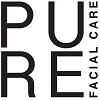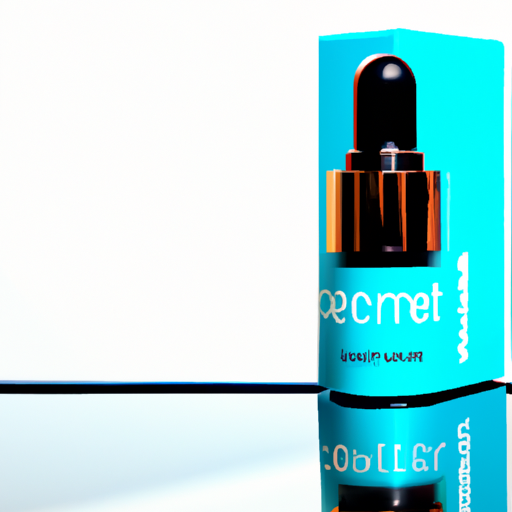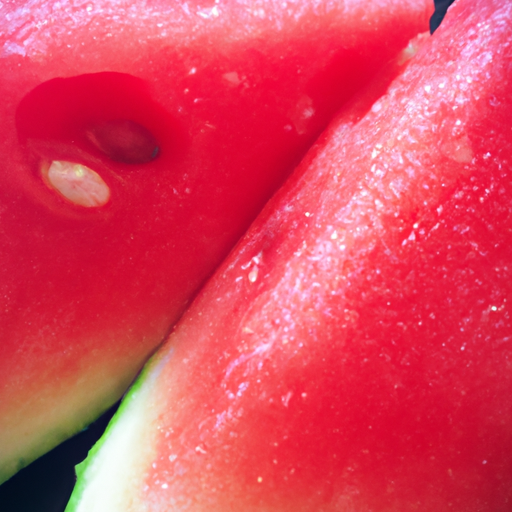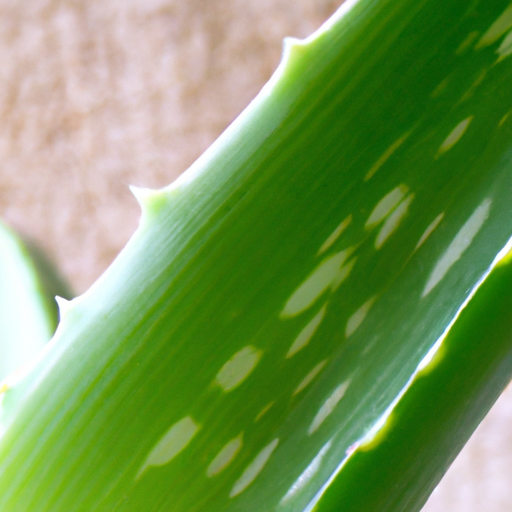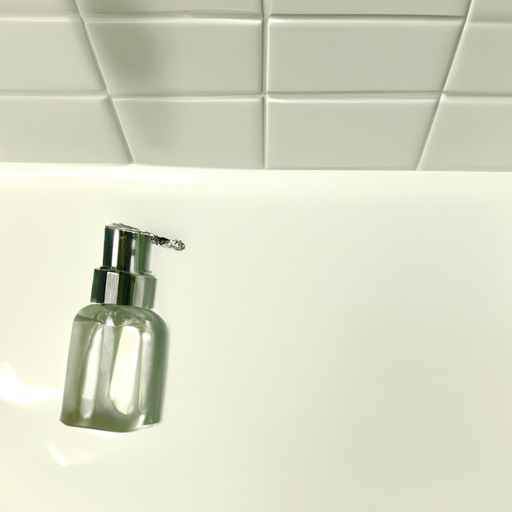You’ve found yourself in the perpetual battle against under eye bags, desperately searching for a solution that will bring back that fresh and youthful look. Well, search no more! In this article, we will explore the most effective and practical methods to treat under eye bags. Bid farewell to those pesky bags and say hello to brighter, rejuvenated eyes. Get ready to reclaim your confidence and put your best face forward.
Table of Contents
Toggle1. Causes of Under Eye Bags
1.1 Lack of sleep
Lack of adequate sleep is one of the primary causes of under eye bags. When you don’t get enough sleep, your body produces more cortisol, a stress hormone that can lead to fluid retention and inflammation. This can result in puffiness and bags under your eyes, making you look tired and worn out.
1.2 Fluid retention
Fluid retention can also contribute to under-eye bags. This can occur due to various factors, such as high salt intake, dehydration, hormonal changes, and certain medical conditions. When your body retains excess fluid, it can accumulate in the delicate skin under your eyes, causing puffiness and bags.
1.3 Ageing
As we age, the skin around our eyes naturally becomes thinner and loses elasticity. This makes it more prone to sagging and creating under eye bags. The production of collagen and elastin, proteins responsible for maintaining the skin’s firmness and elasticity, also decreases with age, exacerbating the problem.
1.4 Genetics
Genetics can play a significant role in the development of under-eye bags. If your parents or close relatives have under eye bags, there is a higher likelihood that you may inherit this trait. Certain genetic factors can contribute to weaker blood vessels and tissue structures, leading to puffiness and bags under the eyes.
2. Prevention Tips
2.1. Get enough sleep
Adequate sleep is crucial for maintaining the health and appearance of your under-eye area. Aim for 7-9 hours of quality sleep each night to allow your body to repair and rejuvenate. Establishing a consistent sleep schedule and creating a bedtime routine can help improve the quality of your sleep and minimise the occurrence of under eye bags.
2.2 Reduce salt intake
Excess sodium in your diet can contribute to water retention and bloating, including under eye bags. Limit your intake of processed and high-sodium foods, and opt for fresh, natural foods instead. Season your meals with herbs and spices for flavour instead of relying heavily on salt.
2.3 Stay hydrated
Drinking an adequate amount of water throughout the day can help prevent fluid retention and maintain overall skin health. Aim for at least 8 glasses (64 ounces) of water per day. Staying hydrated also helps flush out toxins from your body and keeps your skin moisturised, reducing the appearance of under eye bags.
2.4 Avoid allergens
Allergies can cause inflammation and irritation, which can contribute to under eye bags. Identify and avoid allergens that trigger your symptoms, whether it’s pollen, pet dander, or certain foods. Keep your home clean and dust-free, and consider using an air purifier to minimise allergens in your environment.
3. Home Remedies
3.1 Cold compress
Applying a cold compress to your under eye area can help reduce puffiness and swelling. You can either use a cold pack or simply wrap a few ice cubes in a clean cloth. Gently press the compress against your eyes for 10–15 minutes. The cold temperature constricts blood vessels and reduces inflammation, providing temporary relief from under-eye bags.
3.2 Tea bags
Both green tea and chamomile tea bags can be used as a natural remedy for under eye bags. Steep two tea bags in hot water for a few minutes, then place them in the refrigerator to cool. Once chilled, place a tea bag on each closed eyelid and relax for 10–15 minutes. The antioxidants and anti-inflammatory properties of tea can help soothe and refresh tired eyes.
3.3 Cucumber slices
Cucumbers have long been known for their cooling and soothing properties. Cut thick slices of chilled cucumber and place them over your closed eyes for 10–15 minutes. The coolness of the cucumber helps reduce swelling and hydrates the skin, making your under eye bags appear less noticeable.
3.4 Potato slices
Potatoes contain enzymes and natural starches that can help reduce under eye puffiness and dark circles. Slice a raw potato into thin rounds and place the slices on your eyes for 10–15 minutes. The cooling effect combined with the natural properties of potatoes can help tighten the skin and minimise the appearance of under eye bags.
4. Topical Treatments
4.1 Eye creams with caffeine
Eye creams formulated with caffeine can be beneficial in reducing under eye bags. Caffeine helps constrict blood vessels and reduce inflammation, diminishing the appearance of puffiness and darkness. Look for eye creams that specifically target under-eye bags and apply them daily as part of your skincare routine.
4.2 Retinol creams
Retinol, a form of vitamin A, is known for its anti-aging properties and ability to improve skin texture. Applying a retinol cream to the under eye area can help increase collagen production and improve skin elasticity, reducing the appearance of under eye bags over time. Start with a low concentration of retinol and gradually increase as tolerated.
4.3 Vitamin C serums
Vitamin C is a powerful antioxidant that can help brighten and tighten the under eye area. Applying a vitamin C serum daily can stimulate collagen production, reduce inflammation, and improve the overall appearance of under eye bags. Look for serums formulated specifically for the delicate eye area and use them in conjunction with a moisturiser.
4.4 Hyaluronic acid gels
Hyaluronic acid is a natural substance found in the skin that helps retain moisture and improve hydration. Applying a hyaluronic acid gel to the under eye area can help plump and firm the skin, reducing the appearance of under eye bags. Look for gels or serums that contain a high concentration of hyaluronic acid for optimal benefits.
5. Medical Treatments
5.1 Injectable fillers
Injectable fillers, such as hyaluronic acid or collagen-based fillers, can help fill in hollow areas and smooth out the under eye area. These treatments are administered by a dermatologist or plastic surgeon and can provide immediate results in reducing the appearance of under eye bags. The effects can last for several months to a year, depending on the type of filler used.
5.2 Laser therapy
Laser therapy is a non-invasive treatment option that can help tighten the skin and stimulate collagen production. Laser energy is delivered to the under eye area, targeting the pigmented areas and promoting the growth of new, healthier skin cells. This can result in a reduction of under eye bags and an overall improvement in skin texture and appearance.
5.3 Chemical peels
Chemical peels involve the application of a chemical solution to the under eye area, which causes the skin to peel off and regenerate. This treatment can help improve skin tone and texture and reduce the appearance of under eye bags. Chemical peels should be performed by a trained professional who can determine the appropriate strength and duration of the peel based on your specific needs.
5.4 Radiofrequency
Radiofrequency treatments use controlled heat energy to tighten the skin and promote collagen production. This can help reduce under-eye bags and improve overall skin laxity. Radiofrequency treatments are non-invasive and typically require a series of sessions for optimal results. Consult with a dermatologist or aesthetician to determine if radiofrequency is suitable for you.
6. Surgical Interventions
6.1 Blepharoplasty
Blepharoplasty, or eyelid surgery, is a surgical procedure that involves removing excess skin, fat, and muscle from the eyelids. This can help tighten the skin and reduce the appearance of under-eye bags. Blepharoplasty is typically performed by a plastic surgeon and may require a recovery period of several weeks.
6.2 Lower eyelid surgery
Lower eyelid surgery specifically targets the under eye area and focuses on removing excess fat and tightening the skin. This procedure can help eliminate or reduce under eye bags, giving a more youthful and refreshed appearance. Lower eyelid surgery is often performed in conjunction with blepharoplasty for optimal results.
6.3 Fat repositioning
Fat repositioning is a surgical technique that involves redistributing fat from other areas of the face to the under eye area. This can be an effective solution for individuals with hollow under-eye areas or prominent under-eye bags. Fat repositioning is performed by a skilled plastic surgeon and requires a recovery period.
6.4 Laser resurfacing
Laser resurfacing is a surgical procedure that uses laser energy to remove the outer layers of the skin. This stimulates collagen production and helps tighten the skin, reducing the appearance of under eye bags. Laser resurfacing can be performed in combination with other surgical interventions for more comprehensive results.
7. Lifestyle Changes
7.1 Quit smoking
Smoking can contribute to the development of under eye bags by constricting blood vessels and reducing collagen production. Quitting smoking can improve your overall health and promote healthier skin, reducing the visibility of under-eye bags. Seek support from healthcare professionals or support groups to help you quit smoking successfully.
7.2 Limit alcohol consumption
Excessive alcohol consumption can cause dehydration and fluid retention, leading to under eye bags. Limiting your alcohol intake and staying hydrated can help prevent the development of under eye bags. If you choose to drink alcohol, do so in moderation and balance it with plenty of water.
7.3 Reduce stress
Chronic stress can contribute to the development of under eye bags by increasing cortisol levels and affecting sleep patterns. Incorporate stress-reducing activities into your daily routine, such as yoga, meditation, or regular exercise. Prioritise self-care and find healthy coping mechanisms to manage stress effectively.
7.4 Balanced diet
Maintaining a balanced diet rich in nutrients can support the health of your skin and minimise the appearance of under eye bags. Include a variety of fruits, vegetables, lean proteins, and whole grains in your diet to ensure you’re getting essential vitamins and minerals. Avoid processed foods and excessive sugar, which can contribute to inflammation and skin damage.
8. Makeup Techniques
8.1 Colour correction
Colour correction can be an effective technique for concealing under-eye bags. Use a colour corrector in a shade that neutralises the undertones of your under eye bags. For example, if your under eye bags have a bluish tint, use a peach or orange-toned colour corrector to cancel out the discolouration before applying concealer.
8.2 Concealer application
When applying concealer to hide under eye bags, choose a lightweight, hydrating formula in a shade that matches your skin tone. Gently pat the concealer onto the under eye area using your ring finger or a small brush, starting from the inner corner and working outward. Blend the edges seamlessly into your skin for a natural look.
8.3 Highlighting
Using a light-reflecting highlighter can help brighten the under eye area and draw attention away from any bags or puffiness. Apply a small amount of highlighter to the inner corners, centre, and outer edges of the under eye area, blending it lightly for a subtle glow. This can create the illusion of a more awake and refreshed appearance.
8.4 Choosing the right products
When it comes to makeup products, opt for lightweight and hydrating formulas that won’t settle into fine lines or accentuate under-eye bags. Avoid heavy powders or matte formulations, as they can make the under eye area appear dry and emphasise any texture. Look for products specifically designed for the delicate eye area.
9. Professional Skincare Advice
9.1 Consult a dermatologist
If you’re struggling with persistent under eye bags, it’s advisable to consult a dermatologist. They can assess your specific concerns and recommend appropriate skincare treatments or procedures tailored to your needs. A dermatologist can also address any underlying skin conditions or allergies that may be contributing to your under eye bags.
9.2: Follow a personalised skincare routine
A dermatologist can help you create a personalised skincare routine that specifically targets under-eye bags. This may include prescription-strength topical treatments, eye creams, or targeted serums. Following a consistent skincare routine recommended by a professional can yield better and longer-lasting results in reducing the appearance of under eye bags.
9.3 Consider professional treatments
In addition to topical treatments, a dermatologist may recommend professional treatments such as micro-needling, dermal fillers, or laser therapies. These treatments are performed in-office by trained professionals and can provide more intensive and long-lasting results for under eye bags. Discuss the available options with your dermatologist to determine the best course of action for you.
9.4 Monitor progress
Once you start implementing skincare treatments or professional interventions, it’s important to monitor the progress of your under eye bags. Take note of any changes in their appearance, texture, or severity. Communicate regularly with your dermatologist to ensure that the chosen treatments are effective and make any necessary adjustments based on your progress.
10. Natural and Herbal Remedies
10.1 Aloe vera gel
Aloe vera gel has soothing and anti-inflammatory properties that can help reduce under eye bags. Apply fresh aloe vera gel or aloe vera-infused eye creams to the under eye area and gently massage until absorbed. Aloe vera can help hydrate the skin, reduce puffiness, and improve the overall appearance of under eye bags.
10.2 Green tea bags
Green tea contains antioxidants and tannins that can help constrict blood vessels and reduce inflammation. Place brewed and cooled green tea bags on your closed eyes for 10–15 minutes. The cooling sensation and the beneficial compounds in green tea can help alleviate under eye bags and refresh tired eyes.
10.3 Chamomile tea Compound
Chamomile tea has soothing properties that can help reduce under eye bags and inflammation. Brew chamomile tea, let it cool, and soak cotton pads or a clean cloth in the liquid. Apply the compress to the under eye area for 10–15 minutes. Chamomile tea can help relax the skin, reduce puffiness, and promote a calm and rejuvenated appearance.
10.4 Almond oil massage
Almond oil is rich in vitamin E and has moisturising properties that can help improve the appearance of under eye bags. Gently massage a few drops of almond oil into the under eye area using your ring finger. The massage motion helps improve blood circulation and lymphatic drainage, reducing puffiness and promoting a smoother under-eye appearance.
In conclusion, under eye bags can be caused by various factors such as lack of sleep, fluid retention, ageing, and genetics. However, there are numerous prevention tips, home remedies, topical treatments, medical interventions, lifestyle changes, makeup techniques, professional skincare advice, and natural remedies that can help address and reduce the appearance of under eye bags. It’s important to determine the underlying causes and tailor your approach accordingly. Remember, consistency and patience are key when treating under eye bags, and consulting a dermatologist can provide personalised guidance for the best outcomes.
